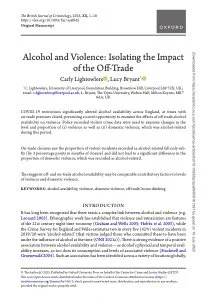By Cruz, J. M., Coombes, A., Mizrahi, Y., Vorobyeva, Y., Tanyu, M., Campie, P., Sánchez, J., & Hill, C
Can a gang member in Honduras leave the gang, abandon criminal activities, and rehabilitate? What factors facilitate the process of disengagement from gangs in Honduras? To answer these questions, the American Institutes for Research (AIR), the Kimberly Green Latin American and Caribbean Center at Florida International University (LACC-FIU), and Democracy International (DI) conducted a study with Honduran gang members and former gang members across the country. The study is based on a survey with a sample of 1,021 respondents with a record of gang membership and 38 indepth interviews with former gang members and other community members. Active gang members do disengage from the gang and its activities, but this disengagement depends on a myriad of factors, including the types of social relationships which the individual establishes outside the gang, the type of gang organization, and the availability of faith-based programs willing to reach out to the individual. This study, funded through the United States Agency for International Development (USAID) Latin America and Caribbean Youth Violence Prevention project, builds on previous academic scholarship on gangs in Honduras and Central America. We conducted the survey interviews in three adult penitentiaries, three juvenile detention centers, two juvenile parole programs, and several faith-based centers which work with former gang members in Tegucigalpa and San Pedro Sula. We complemented the information with semistructured interviews with 14 former gang members in the metropolitan areas of San Pedro and La Ceiba. We also interviewed 24 subject-matter experts and community members in Tegucigalpa, San Pedro Sula, and La Ceiba. We contracted a local firm, ANED, to conduct the survey interviews and trained a local team of interviewers, who collected the information under our direct supervision. For the in-depth interviews, we contracted and trained two local specialists. Data collection was conducted between October and December 2019. PRIMARY RESULTS The results indicate that gangs remain a predominantly male phenomenon, and the average age at which males join a gang is 15. Interviewed females joined the gang at an average age of 13.2. Nearly 46 percent of the subjects interviewed for this study are active members of a gang, while the rest are in different stages of gang membership. Approximately 54 percent of the subjects interviewed in the survey belong—or have belonged—to Mara Salvatrucha (MS-13), while 35 percent expressed their loyalty to the 18th Street Gang, also known as Pandilla 18 (or 18th Street Gang). The rest of the interviewees indicated membership in smaller gang groups: Los Chirizos, El Combo que no se deja, Los Olanchanos, Los Vatos Locos, etc. Education The average number of years that individuals with a record of gang membership spent in school was 9.6 years, and 90 percent of our respondents never finished high school. Half of the respondents have a household income of less than 250 USD, and 84 percent did not have a regular job, either in the formal or informal sector, even before going to prison. One in every four gang members lived with their parents or step-parents, while 31 percent lived with other relatives or alone. Furthermore, 56 percent of gang members had children of their own, and 45 percent were married or in a stable relationship. Gang Activities Violence and criminal activities are essential components of gang life. Extortion, murder, and drug trafficking are the most common crimes of which gang members are accused. Nearly 69 percent of the respondents were accused of committing these types of crimes in addition to assaults, robberies, and illicit association. In Honduras, both gangs control territories through the use of extortion, drug trafficking, and violence. Such activities, in combination with seniority as an active gang member, are critical components for ascending the gang structure ranks. Contrary to the common assumption that gang members had to complete a “mission” to join the gang, evidence collected by the study suggests that most of them did not have to go through rites of initiation or perform a mission. Rather, “missions” become an important mechanism by which to ascend the gang ranks once the individual has joined the gang. Gang Structure Over the past two decades, the structures of MS-13 and Barrio 18 seem to have evolved and “mutated.” Gangs appear to be more structured and mandated by a system of unwritten norms and rules common to each organization and shared by the diverse subgroups who share the same gang affiliation. Gangs preserve a regionally fragmented structure (sectors and cliques) which enables them to operate with certain autonomy while adhering to the rules established by membership. The structure of both MS-13 and Barrio 18 include different levels of management, which typically start with the clique as its lowest operational level (i.e., at the neighborhood level). Cliques are the basic gang unit and are composed of several members. On average, cliques are composed of 36 male members, but they vary by size. However, cliques from other gangs (Los Chirizos, El Combo que no se deja, etc.) tend to be larger on average, with 45.8 male members per clique. Cliques are clustered in regional groups called sectores (sectors). Both cliques and sectores are run by a senior member of the gang. Senior members of the MS-13 gang are known as Compas and Palabreros, and Barrio 18 leaders are known as Toros and Homies. Half of the survey respondents (49 percent) held what can be considered a soldier position within the structure of the gang, 17 percent held some position of leadership, and 25 percent were aspiring members of the gang who served as collaborators or informants. Gang leaders do not consider collaborators or informants to be official members of the gang, yet they participate in core activities and play a significant role in the dynamics of gang survival and operation. Joining the Gang From the standpoint of former and active gang members, most (63 percent) joined the gang because of the “pull forces” which peers in the gang exert over them in their teenage years. Gang involvement revolves around the opportunity of disenfranchised teens to join a group which provides them with affection and care, which many do not find at home. Thus, gang members value the “solidarity,” “social respect,” and resources the gang provides, which otherwise would be absent if they were not part of the organization. Evidence suggests that several gang members grew up in environments in which problematic families, lack of opportunities, and lack of respect and affection from their communities were common. Gang recruiters appeal to youth by promising to supply such needs to grow and exert stronger control inside their territories. Thus, findings suggest that most people end up joining gangs in Honduras for “innocent” reasons rather than because of criminal intent. Gang Disengagement The findings of this study suggest that many members do in fact disengage from gangs, but they go through a process in which the interaction of several conditions determines how soon or how complicated the separation could be. More than half of active gang members want to leave the gang. There are four significant predictors of active gang members’ intentions to leave a gang: the type of organization to which the person belongs, the number of years that the person has been active in the gang, the individual’s religious affiliation, and the person’s immediate social circle. Members of the two major gangs expressed less intention of leaving the gang compared to members of the smaller gangs. Active members of MS-13 demonstrated fewer intentions of leaving the gang compared to their rivals in Barrio 18. Additionally, there is a U-shaped curve relationship between the number of years in the gang and intentions to leave. During the first years of gang membership, intentions to leave are stronger; then they subside for a while and start growing again after six years of being in the gang. This pattern suggests that the early months and years of gang life are probably full of doubts about membership. These doubts are later quenched by gratifying experiences as a gang member and then re-emerge as the individual matures. This finding is significantly different from that in Cruz and colleagues’ 2018 study in El Salvador, in which researchers found that intentions to leave the gang are low during the first years of gang membership and then grow as time passes. Religion plays an important role in the process of leaving the gang, although comparatively, this role seems less prevalent than in El Salvador. Belonging to an evangelical church not only contributes to one’s intention to disengage from the gang but also is approved by leaders of the gang (more specifically, MS-13). Further, evangelical churches seem to be more successful than other denominations in connecting with the spiritual needs of the gang population. In the in-depth interviews, half of the respondents referred to a connection to God as the most powerful change mechanism which enabled gang members to disengage from the gang. Survey data also reveal that one of the most important factors in an individual’s intention to leave a gang is social interaction. Gang members who spent the most time with non-gang individuals (their family, non-gang friends, or even alone) before they were detained in prison were more prone to thoughts about leaving the gang. Thus, one’s social circle has a significant influence on the intent to disengage. Gang members who are exposed to social groups different from the gang appear to be more willing to abandon gang life. Reintegration The process of leaving a gang doesn’t end there. Rather, being a defector is the beginning of a series of challenges and obstacles which a former gang member has to face. The most common reintegration challenges by a former gang member include lack of opportunities, insecurity, police abuse, social discrimination, poverty, and lack of family support. Most study participants (69.2 percent) said that church or faith-based organizations are the appropriate institutions to lead rehabilitation and reintegration programs. Otherwise, 14.6 percent of respondents said that nongovernmental organizations should lead rehabilitation programs. Few people interviewed saw government agencies leading rehabilitation efforts, and experts interviewed thought there was little to no political will to approach the gang phenomenon from a rehabilitation standpoint. RECOMMENDATIONS Our research indicates that violence prevention efforts should target the root causes of joining a gang, which are mostly related to absence of positive youth development opportunities in their communities, including lack of employment, insufficient access to education, weak family structures, and negative peer influences. We recommend that programming focus on providing relational, educational, community, and economic supports to young people from an early age to both prevent youth from joining gangs, as well as to support those who have disengaged. Prevention strategies should include efforts to support disengagement from the gangs during the first years of gang membership, when many youth are considering disengagement. Finally, once gang members disengage from gangs, we recommend supporting rehabilitation and reintegration of former gang members to help them become productive members of society and prevent their reinsertion into gang activity.
Washington, DC: American Institutes for Research & Florida International University. 2020. 91p.





















